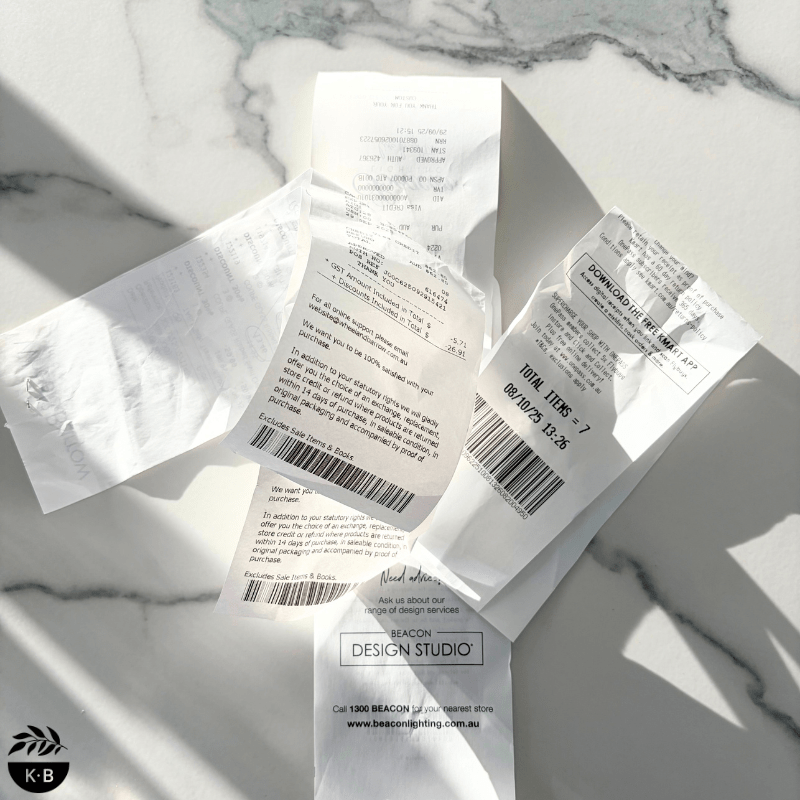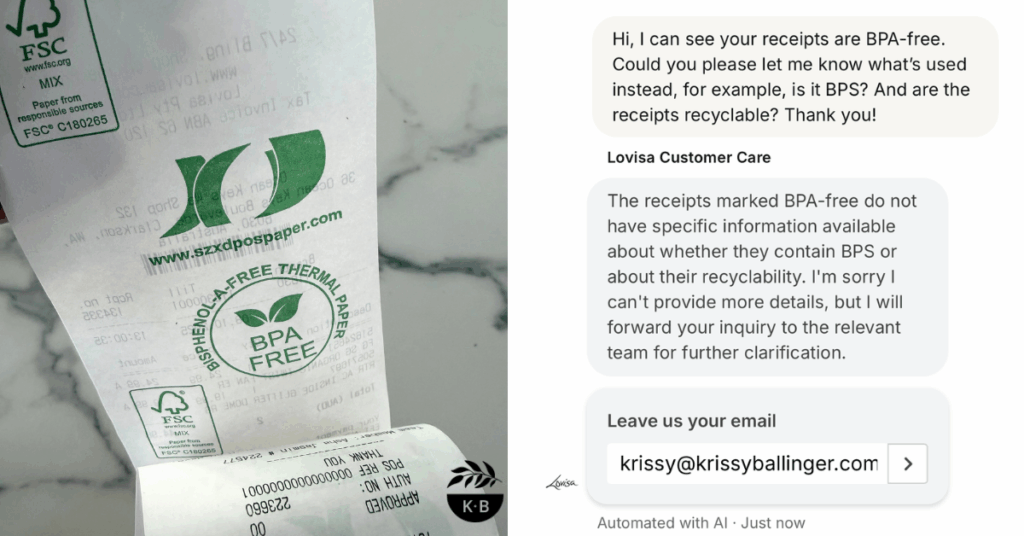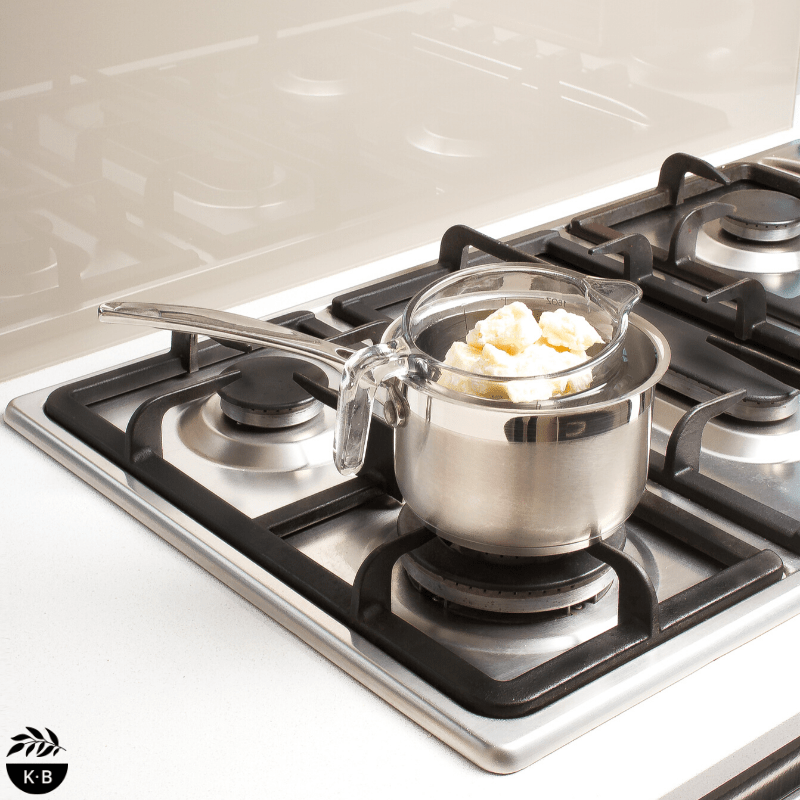 Proof of purchase – and a dose of toxins, too. It might seem harmless to pop a receipt into your wallet or the recycling bin, but those small slips of paper can have a surprisingly big impact on both your health and the environment.
Proof of purchase – and a dose of toxins, too. It might seem harmless to pop a receipt into your wallet or the recycling bin, but those small slips of paper can have a surprisingly big impact on both your health and the environment.
Most receipts in Australia are printed on thermal paper, which is coated with chemicals that react to heat to produce text – no ink required. While clever, this coating typically contains bisphenol A (BPA) or bisphenol S (BPS). These endocrine-disrupting chemicals can be absorbed through the skin when you handle receipts. Over time, repeated exposure has been linked to hormonal imbalances, reproductive issues, and other health concerns such as insulin resistance. Cashiers and retail workers – who handle hundreds of receipts daily – are at particular risk of higher exposure.
Without gloves, urinary BPA levels increased by two folds following work-shift (source).
Thermal receipts also present a problem when it comes to disposal. They cannot be recycled in Australia, as their chemical coating contaminates the paper recycling stream. Tossing them in with other paper products risks spreading BPA into recycled materials. Composting them isn’t a good idea either, as the chemicals can leach into soil.
Environmentally, the impact adds up.
The global thermal paper market was valued at USD 4.37 billion in 2024. Isn’t that nuts! That translates to millions of metres of thermal paper produced each year, contributing to deforestation, chemical waste, and landfill – all for something we could easily accept digitally. Many receipts are automatically printed and discarded within seconds, a single-use item that rarely serves a lasting purpose.
How to Tell if a Receipt is Thermal
Not all paper is created equal, and thermal receipts have a few tell-tale signs. Here’s how to identify them:
The fingernail test
Gently scratch the surface with your fingernail. If a dark line appears, it’s thermal paper. This happens because the special coating reacts to friction and heat – just like it does in the printer.
The texture
Thermal paper often feels smooth, shiny, or slightly waxy compared to regular paper. This coating is what holds the BPA/BPS chemicals.
The heat test
Hold the receipt near a gentle heat source, like a warm light bulb. If the paper turns black where it’s heated, that’s another clear sign.
Print quality
Thermal receipts usually have fuzzy or slightly shiny black text rather than crisp ink. The print can fade or smudge if rubbed.
💡Quick tip
Most receipts from supermarkets, chemists, cafés, petrol stations, and retail stores in Australia are thermal by default. If it came from a little roll printer without ink, it’s almost certainly thermal.
BPA free receipts exist. But, what is in them?
I recently came across this receipt from Lovisa Jewellery and, naturally, got curious. I sent them a message, and as you can see, AI wasn’t much help.

I’ve also emailed them directly and am waiting on a reply. It seems Woolworths and Coles are moving away from BPA too, but staying tight-lipped about what they’re using as a replacement.
Reduce Your Exposure
A simple way to reduce your exposure and environmental footprint is to decline receipts where possible or opt for digital versions. Storing electronic copies not only keeps your wallet clutter-free but also cuts down on unnecessary paper and chemical waste.
Small shifts like this, multiplied across communities, can make a real difference – for our health and the planet.







1 Comment
Great Krissy you are enquiring about these receipts. I hate knowing that they’re toxic, but at the same time mostly need to check whether they’ve been correct.
As you say, what are they using instead now, would be good to know that and not that they are just exchanging one toxin for another and leading us astray.